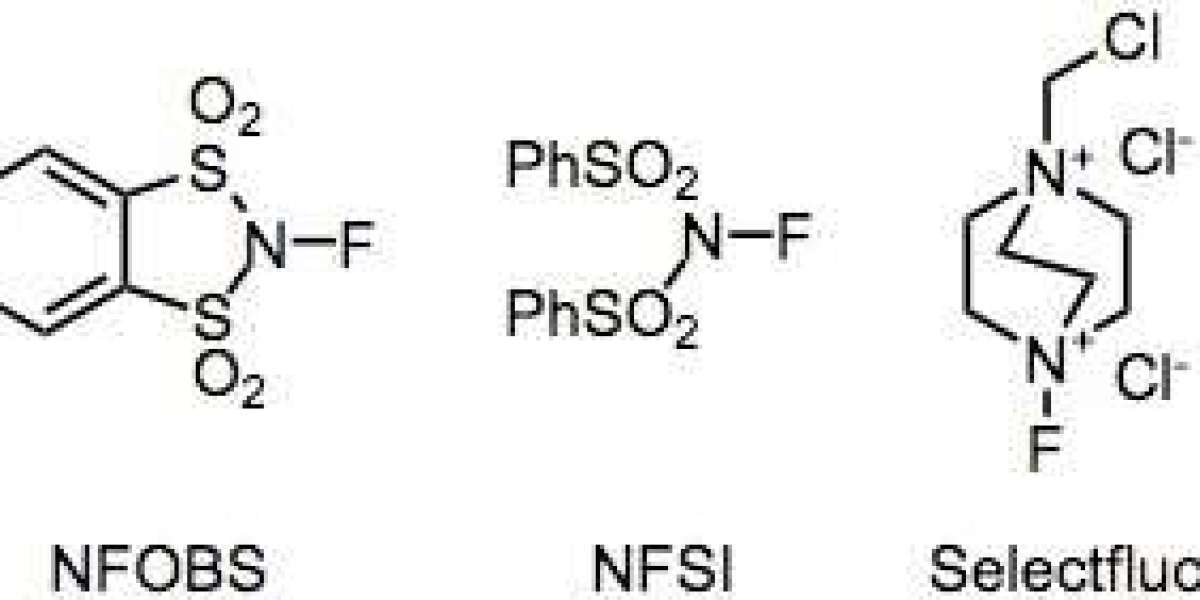Other Reagents in Chemistry: Essential Tools for Modern Synthesis
Chemical reagents are the building blocks of synthetic chemistry, enabling the construction, modification, and analysis of complex molecules. While fluorinating reagents play a key role in introducing fluorine into compounds, a vast array of other reagents are just as vital for carrying out specific transformations, protecting functional groups, driving selectivity, or facilitating analytical detection.
This article provides an overview of important reagent categories, their functions, representative examples, and key applications across chemistry disciplines.
1. Oxidizing Reagents
Oxidizing agents facilitate the loss of electrons or increase in oxidation state of a substrate. They're crucial for transformations like converting alcohols to aldehydes/ketones, or alkenes to epoxides.
vast array of other reagents are just as vital for carrying out specific transformations, protecting functional groups, driving selectivity, or facilitating analytical detection.
Common Oxidizers:
PCC (Pyridinium chlorochromate): Converts primary alcohols to aldehydes.
Jones Reagent (CrO₃/H₂SO₄): Strong oxidizer for alcohols to carboxylic acids.
KMnO₄ (Potassium permanganate): Versatile oxidizer for alkenes, alcohols.
Swern Oxidation (DMSO/oxalyl chloride): Mild method for sensitive substrates.
Dess–Martin periodinane (DMP): Excellent for selective oxidation of alcohols.
Hydrogen peroxide (H₂O₂): Green oxidizer used in epoxidations and hydroxylations.
2. Reducing Reagents
Reducing agents donate electrons, facilitating reduction reactions such as converting ketones to alcohols or nitro compounds to amines.
Common Reducers:
LiAlH₄ (Lithium aluminum hydride): Strong reducer for esters, carboxylic acids.
NaBH₄ (Sodium borohydride): Milder, selective for aldehydes and ketones.
Hydrogen gas (H₂) with Pd, Pt, or Ni catalysts: For hydrogenation of double/triple bonds.
DIBAL-H (Diisobutylaluminum hydride): Selective for ester to aldehyde conversions.
Zn/HCl or Fe/HCl: Reduces nitro groups to amines.
Borane (BH₃): Useful for hydroboration-oxidation sequences.
3. Protecting Group Reagents
These reagents temporarily "protect" reactive functional groups during multi-step syntheses, preventing undesired side reactions.
Common Protecting Agents:
TBDMS-Cl (tert-Butyldimethylsilyl chloride): Protects alcohols as silyl ethers.
Boc (tert-Butyloxycarbonyl): Protects amines, removable under acidic conditions.
Fmoc (Fluorenylmethyloxycarbonyl): Base-labile amine protecting group.
Acetals/Ketals: Protect carbonyls in acidic conditions.
Methoxymethyl (MOM) ethers: Acid-labile alcohol protecting group.
4. Alkylating and Acylating Reagents
These reagents introduce alkyl or acyl groups into a molecule, critical for forming C–C or C–heteroatom bonds.
Alkylating Agents:
Alkyl halides (e.g., MeI, EtBr): Used in SN2 reactions.
Diazomethane (CH₂N₂): Methylates carboxylic acids to esters.
Dimethyl sulfate: Highly reactive and toxic methylating agent.
Acylating Agents:
Acid chlorides (e.g., acetyl chloride): Used to acylate alcohols or amines.
Anhydrides (e.g., acetic anhydride): Common for acetylation reactions.
Acyl imidazoles: Safer alternatives for peptide and ester synthesis.
5. Organometallic Reagents
Organometallics form carbon–carbon bonds, enabling powerful synthetic transformations.
Common Organometallic Reagents:
Grignard reagents (RMgX): Add to carbonyls to form alcohols.
Organolithium reagents (RLi): Strong bases and nucleophiles.
Gilman reagents (R₂CuLi): Good for substitution and conjugate addition.
Palladium-catalyzed cross-coupling reagents:
Suzuki coupling (boronic acids)
Heck and Sonogashira reactions
6. Bases and Acids (Catalytic or Stoichiometric)
Acid/base chemistry underpins many reaction mechanisms.
Bases:
NaOH, KOH: Strong inorganic bases.
Triethylamine (Et₃N): Non-nucleophilic organic base.
LDA (Lithium diisopropylamide): Strong, sterically hindered base.
DBU, DBN: Strong, non-nucleophilic amidine bases.
Acids:
HCl, H₂SO₄, HNO₃: Common mineral acids.
Trifluoroacetic acid (TFA): Used for Boc deprotection.
Lewis acids (e.g., AlCl₃, BF₃·Et₂O): Catalyze Friedel–Crafts and other reactions.
7. Phase-Transfer Catalysts (PTCs)
PTCs allow reagents in different phases (e.g., organic and aqueous) to interact.
Common PTCs:
Tetrabutylammonium bromide (TBAB)
Crown ethers (e.g., 18-crown-6)
Used in nucleophilic substitution, alkylation, and oxidations.
8. Dehydrating and Condensing Agents
Used to remove water or promote bond formation in esterification, amidation, and peptide coupling.
Common Dehydrating Agents:
Thionyl chloride (SOCl₂): Converts alcohols to alkyl chlorides.
POCl₃, PCl₅: Used in chlorination and dehydration.
DCC (Dicyclohexylcarbodiimide): Promotes amide and ester bond formation.
EDC (Water-soluble carbodiimide): Used in peptide synthesis.
P₂O₅ (Phosphorus pentoxide): Strong dehydrating agent.
9. Analytical Reagents
Reagents used for chemical analysis, detection, or derivatization.
Examples:
Ninhydrin: Detects primary and secondary amines in amino acids.
DNPH (2,4-Dinitrophenylhydrazine): Reacts with carbonyls to form hydrazones.
Tollen’s Reagent: Silver-based reagent for aldehyde detection.
Fehling’s/Benedict’s reagents: Detect reducing sugars.
10. Photochemical and Radical Initiators
Used to start radical or photo-induced reactions.
Examples:
AIBN (Azobisisobutyronitrile): Thermal radical initiator.
Benzoyl peroxide (BPO): Used in polymerizations.
Ru(bpy)₃²⁺ or Ir complexes: Common photoredox catalysts.
Eosin Y, Rose Bengal: Organic photosensitizers.
Final Thoughts
Beyond fluorinating agents, a wide range of reagents is essential for modern synthetic, analytical, and industrial chemistry. Understanding their mechanisms, compatibility, and handling requirements allows chemists to design efficient, safe, and creative synthetic routes.
As chemistry continues to evolve, newer reagents—often greener, more selective, and more stable—are being developed to meet the demands of pharmaceutical innovation, sustainable processes, and materials development.














